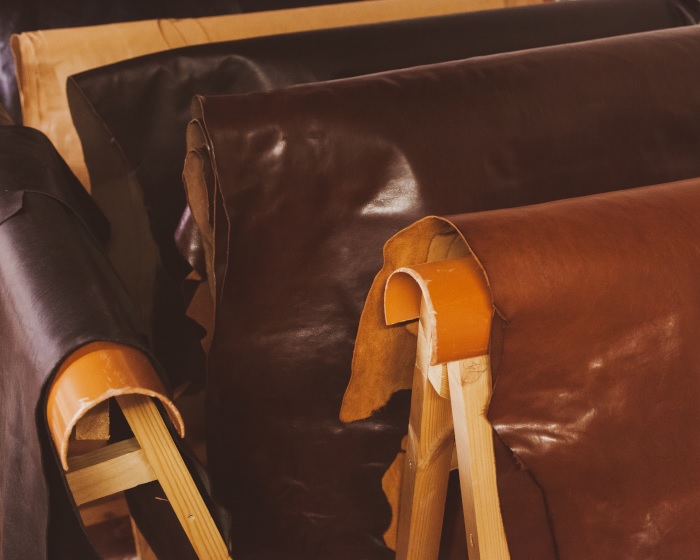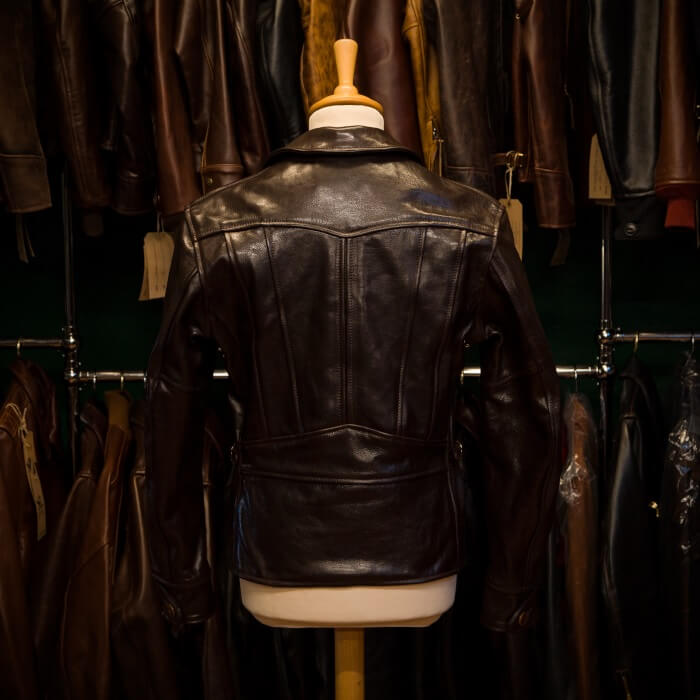
What is vegetable tanned leather?
Human beings have been wearing leather clothes for thousands of years, and prior to the Industrial Revolution, there was only one way to turn animal hides into usable leather: a process known as vegetable tanning.
Unlike other types of leather - which are tanned using synthetic chemicals - vegetable tanned leather is tanned using natural plant-based materials such as bark, leaves and fruits.
To be clear: vegetable tanned leather is NOT the same thing as vegan leather, because while the tannins come from plants, the leather itself comes from an animal.
Vegetable tanned leather has a unique appearance because it is tanned using natural materials. The resulting leather has a distinctive texture and colour that is unlike any other type of leather. Its natural, earthy look is highly sought after by many consumers.
The development of chrome tanning techniques in the 1800s threatened to make the (far slower) vegetable tanning process obsolete. But some manufacturers continue to do things the old-fashioned way, and many leather jacket enthusiasts consider vegetable tanned leather far more desirable than chrome tanned leather.
Keep reading to learn more about vegetable tanned leather and why its popularity has endured to the present day.
How is vegetable tanned leather made?
The tanning process involves soaking animal hides in a solution of water and vegetable tannins, which are extracted from plant materials - usually the bark of trees like oak, mimosa and chestnut. The hides are then left to dry naturally, and this process is repeated until the leather is fully tanned.
During this process, the tannins bind to the hide's collagen, displacing water molecules and creating a durable, water-resistant leather that's flexible enough to be worn as clothing or footwear.

Our Hooch Hauler jacket in Chestnut Badalassi Steerhide, a stunning vegetable tanned leather.
Vegetable tanning takes a long time. Hides may need to be soaked for many months, and the tannin concentration must be gradually increased over time to achieve the desired results. Success is dependent on the hard work and dedication of highly skilled craftspeople.
So you can understand why, nowadays, only 10% of the world's leather is produced using this method. Chrome tanned leather is far more common - but does that mean it's of a lower quality?
Vegetable tanned leather vs chrome tanned leather
Both vegetable tanning and chrome tanning have their advantages, and truthfully, neither method is objectively better than the other. Here's a quick overview of the differences:
Vegetable tanned leather is usually...
- Stiffer than chrome tanned leather, requiring more breaking in
- More likely to develop a unique patina once exposed to the elements
- More eco-friendly than chrome tanned leather (see below)
Chrome tanned leather is usually...
- Quicker and easier to produce
- Softer and more flexible than vegetable tanned leather
- More colour-consistent and weather-resistant
The artisans here at Aero Leather Clothing work with both vegetable and chrome tanned leather, and while it's true that vegetable tanned leather is of a higher quality on average, this doesn't mean that chrome tanned leather is always an inferior choice - in fact, some of the very best leathers we've ever encountered were chrome tanned.
Is vegetable tanned leather better for the environment?
One of the reasons why vegetable tanned leather may be considered preferable is its relatively small environmental impact. While the chrome tanning process can involve a number of chemicals that are potentially detrimental to the ecosystem, vegetable tanning uses natural materials that are renewable and biodegradable, and it does not produce harmful chemicals or by-products. Additionally, the leather produced is long-lasting, meaning that it is less likely to end up in landfills or contribute to environmental waste.
That being said, chrome tanning techniques have been in use for well over a century at this point and their environmental impact is well understood. The tanneries we work with - such as Horween, the manufacturers of Chromexcel® leather - have taken steps to operate as sustainably as possible, greatly reducing their environmental footprint. For example, Chromexcel® leather is combination tanned (vegetable tanned with a small chrome tannage to lock in waxes and colour).
Whether vegetable tanned or chrome tanned, we only work with the very best leather when creating our iconic Aero leather jackets. If you'd like to feel the quality for yourself, you can order up to five leather samples from our website.
Choose Leather Samples Handmade Leather Jackets